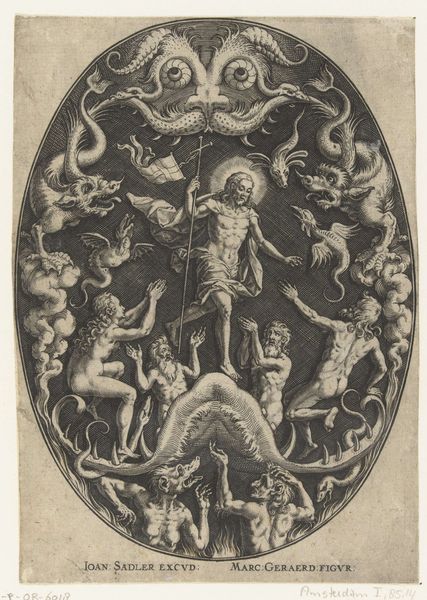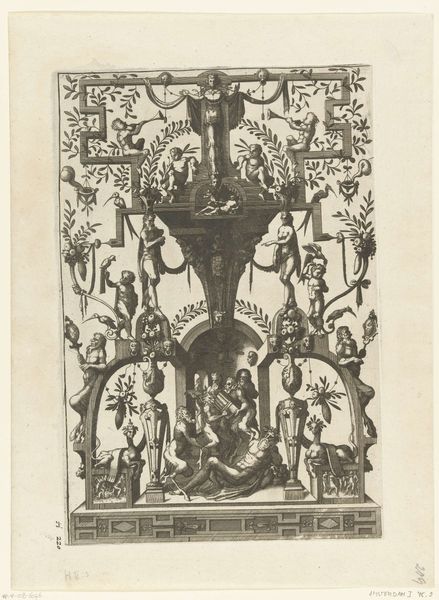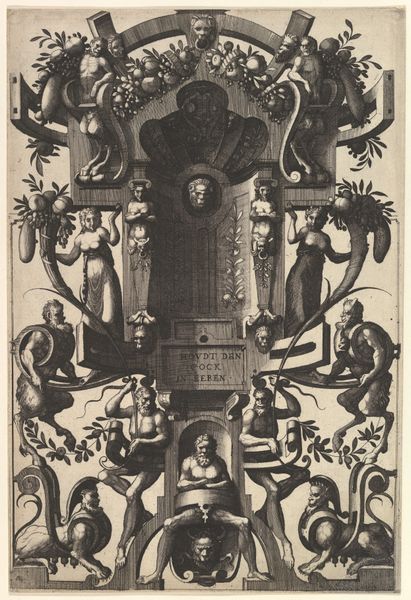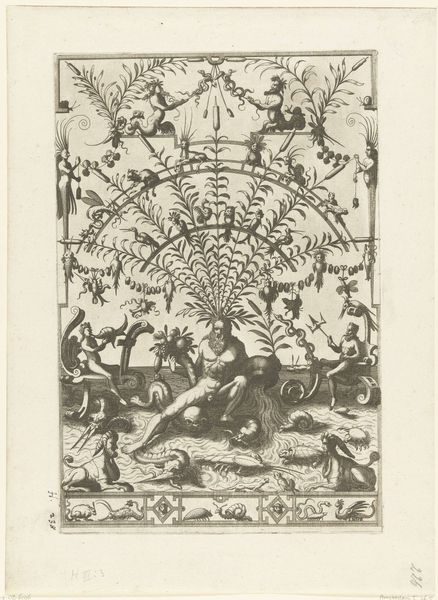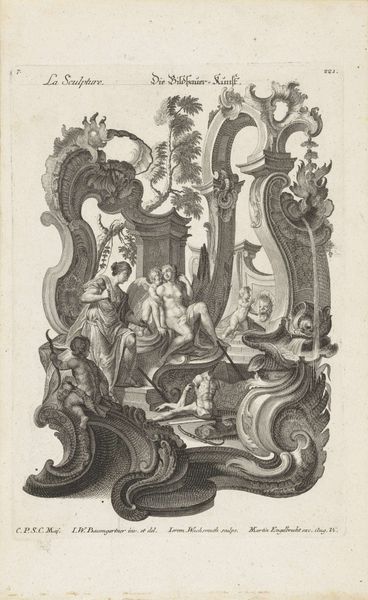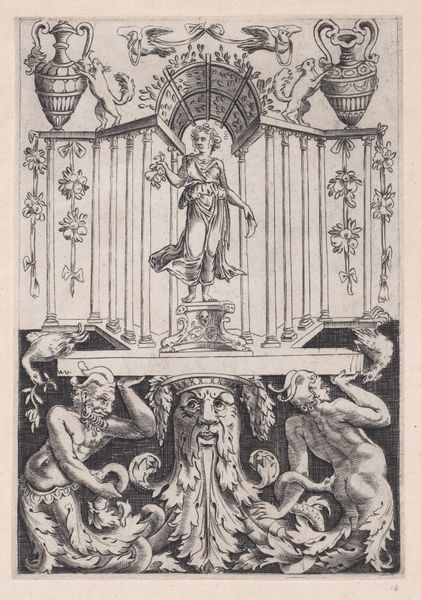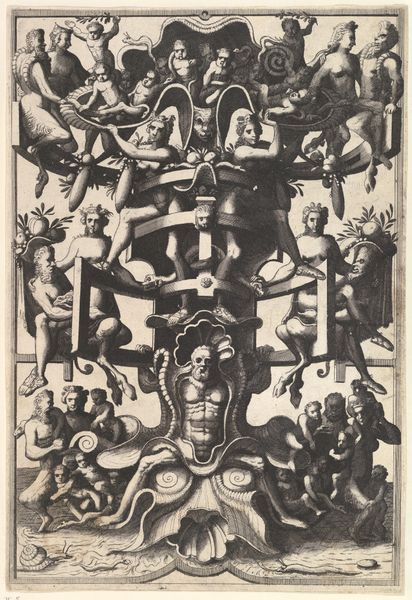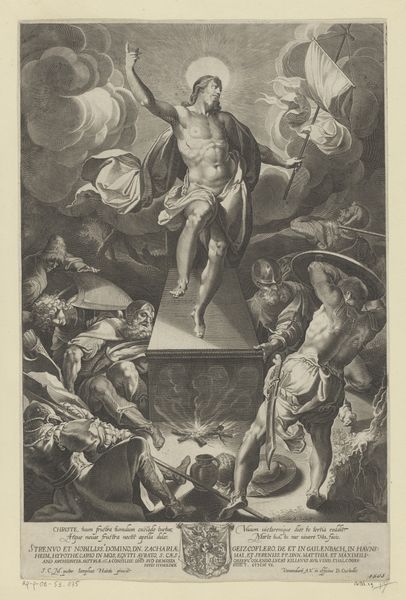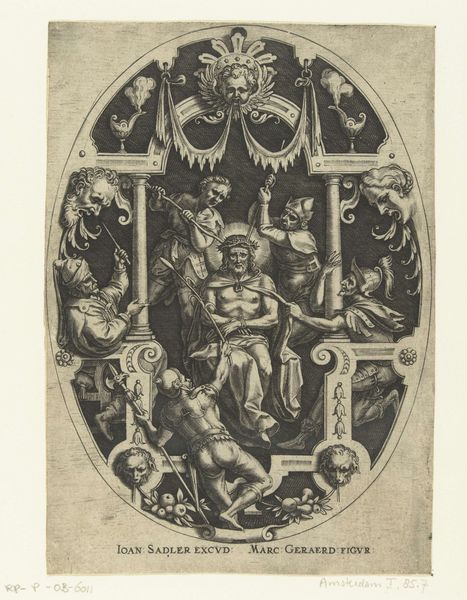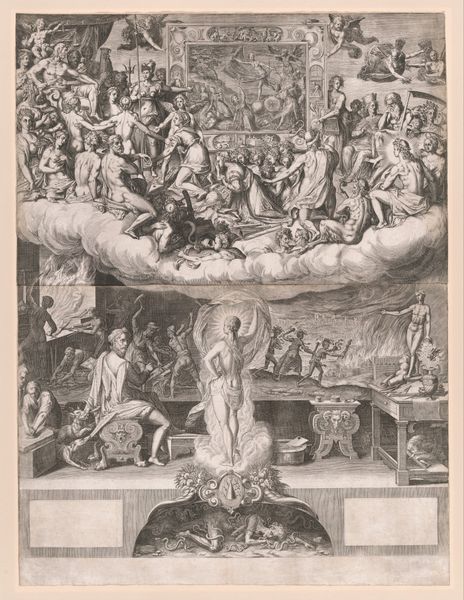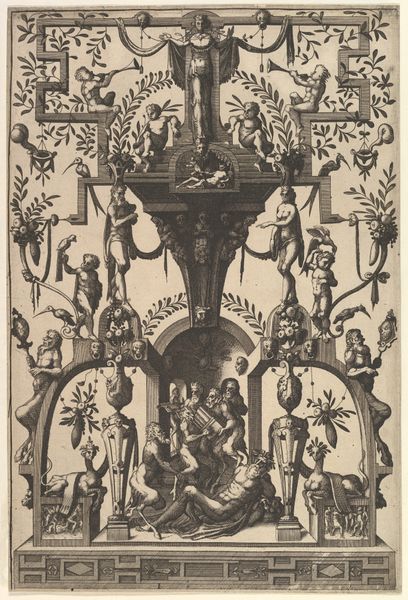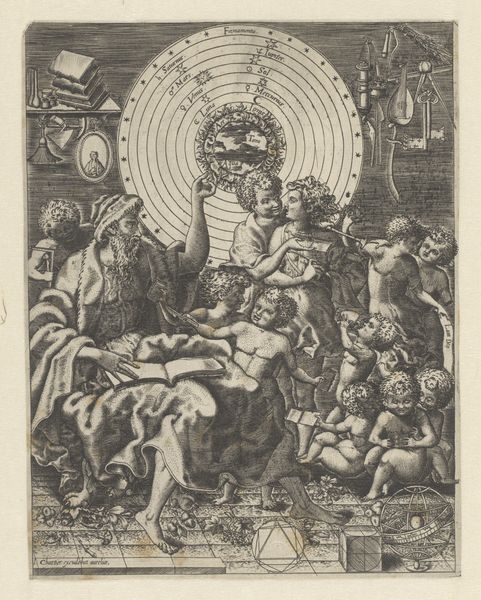
Caritas, gevangen in een schelpachtige vorm waar water uit stroomt 1556
0:00
0:00
print, engraving
#
allegory
#
pen drawing
# print
#
old engraving style
#
mannerism
#
figuration
#
pen-ink sketch
#
pen work
#
sketchbook drawing
#
history-painting
#
engraving
Dimensions: height 306 mm, width 208 mm
Copyright: Rijks Museum: Open Domain
Curator: Welcome. Today, we're observing "Caritas, gevangen in een schelpachtige vorm waar water uit stroomt", an engraving made around 1556, attributed to Johannes or Lucas van Doetechum. The artwork resides here at the Rijksmuseum. Editor: It strikes me immediately as…confined. The figure at the center seems imprisoned within that ornate, shell-like structure, despite the clear intention to convey charity and abundance. The whole composition feels tense. Curator: Precisely. Notice how the composition employs a rather dense Mannerist style, packing allegorical figures and symbols tightly together. Semiotically, the shell might represent the limitations placed upon idealized virtues within a complex societal structure. Consider how "Caritas" is quite literally framed and constrained. Editor: That "complex societal structure," though! I think it’s difficult to separate it from the social upheavals of the time. It reads less as idealized virtue and more like the struggle to maintain certain patriarchal values during the Reformation. Are we seeing a visual manifestation of societal pressure, funneled through an engraver's hand? Curator: That's a fascinating reading. What elements specifically lead you to interpret it as such? Is it the way in which idealized virtues are constructed through and reliant on power dynamics, particularly gendered ones? The somewhat muscular, masculine-appearing figure challenges the traditional interpretation of 'Caritas' as simple maternal generosity, doesn't it? Editor: Exactly! Her pose and even those apple boughs being presented evoke power and perhaps forced bounty, and I see anxiety about maintaining the status quo reflected. Curator: An astute observation. The lines are beautifully articulated in the engraving; note the incredible detail in the figures' musculature and drapery. The density contributes to the Mannerist aesthetic and offers a commentary on artistic virtuosity. The textures within the shell contrast starkly with the relatively smooth skin of the central figure, underscoring the complexity of the form itself. Editor: And, to take that further, I think those stylistic and material contrasts enhance its disquieting effect. Considering its position now within the Rijksmuseum, in the canon, does the act of viewing and studying an engraving like this actually reinforce historical structures and their relationship to us in the present? Curator: That’s certainly a critical question for us as viewers. Ultimately, works like these provide fertile ground to contemplate our historical values and inherited expectations. Editor: Absolutely. This engraving provides more than just a picture, doesn’t it? It's a loaded reflection from a tumultuous past.
Comments
No comments
Be the first to comment and join the conversation on the ultimate creative platform.
